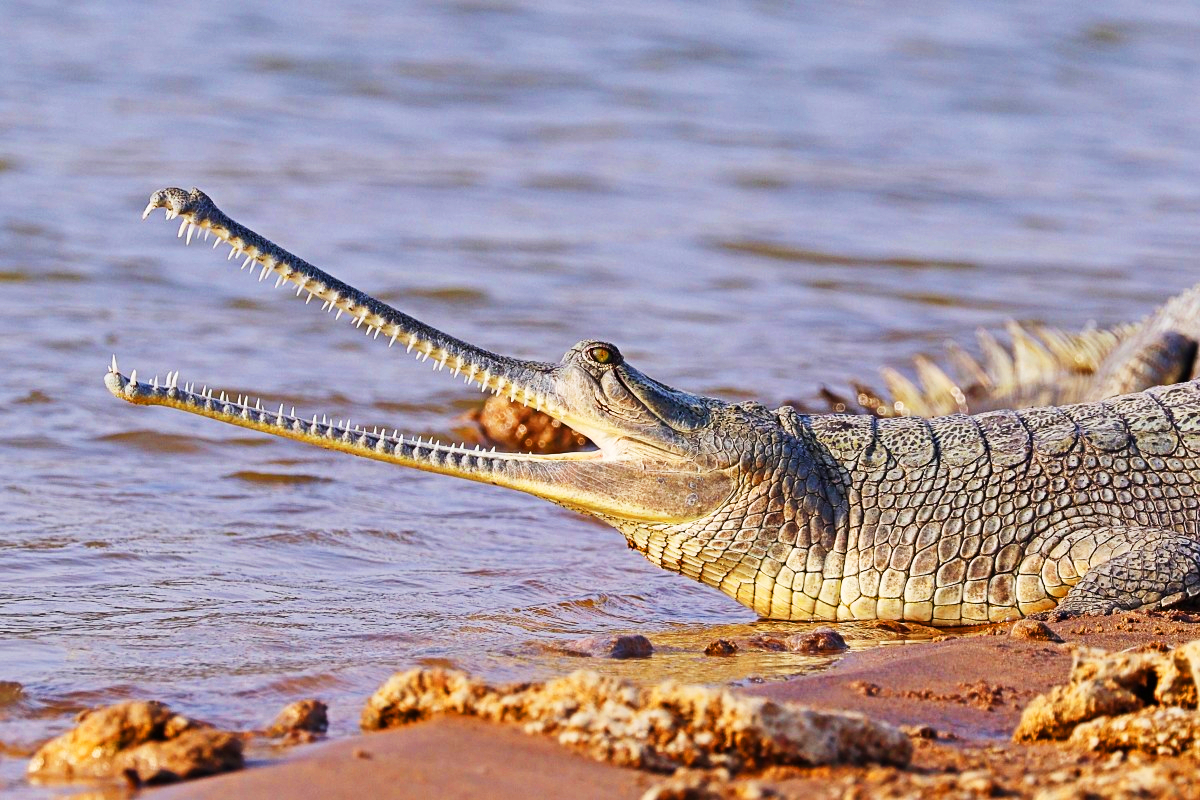Dholpur’s National Chambal Sanctuary
Dholpur’s National Chambal Sanctuary is one of India’s most well-known wildlife reserves. It is made up of a 5,400-square-kilometer region that is well-protected by the Indian government to save rare and endangered Gharial or alligators. As a result, National Chambal Gharial Wildlife Sanctuary is another name for this national park.
The city of Dholpur is the closest to the National Chambal Sanctuary. Even though it lies on the border of Uttar Pradesh, Madhya Pradesh, and Rajasthan, Dholpur is regarded as the most convenient approach to the National Chambal Sanctuary. The national park is named after the Chambal River, which runs through the sanctuary.


Wildlife Sanctuary is a must-see destination for anyone interested in flora and animals. It was designed to handle big groups of crocodiles and endangered turtles in a natural setting, and it provides stunning vistas for those who want to see these animals up close. Chambal is a magnificent river in and of itself, displaying the wonders of nature. It is surrounded by Chambal ravines and lush foliage, providing picture-perfect scenery. The National Chambal Sanctuary’s website has a lot of information about it. The National Chambal Sanctuary is a well-known wildlife refuge that protects the majority of endangered crocodile, turtle, and dolphin species. The sanctuary, which begins in Etawah, Uttar Pradesh, and extends for 400 kilometres, is considered to be the world’s longest. Rajasthan is home to the majority of the sanctuary.
Wildlife at National Chambal Crocodile Sanctuary


Gharial, Red-Crowned Roof Turtles, and Dolphins live in the National Chambal Sanctuary. Other uncommon wildlife in the National Chambal Sanctuary include crocodiles, striped hyenas, and Indian wolves. With the full backing of the Indian government, these creatures are easily sighted at the park. The National Chambal Gharial Sanctuary in Dholpur is a great place to visit if you want to observe unusual creatures.
Hanuman Langur, Indian Mongoose, Turtles, Northern Palm Squirrel, Jungle Cat, Common Palm Civet, Bengal Fox, Grey Mongoose, Wild Boar, Nilgai,Rhesus Macaque, Sambar, Chinkara, Blackbuck, Golden Jackal, Hedgehog, Indian Flying Fox,, Porcupine, and Indian Hare are some of the park’s other notable animals. The National Chambal Sanctuary’s most notable feature is that it is home to eight of the world’s twenty-six unique turtle species. Along with a diverse array of animals, the park is home to 320 different bird species. This sanctuary is designated as an IBA because it is home to several rare bird species (Important Bird Area). As migratory birds, some of the birds arrive every year from Siberia or other areas of the world.
Some of the migrating species that arrive here in the winter are the Bar Headed Goose, Ferruginous Pochard, Red Crested Pochard, and Black-Bellied Tern. The sanctuary’s most popular bird species are the Sarus Crane, Indian Courser, Indian Skimmer, and Pallas Fish Eagle. In addition, the National Chambal Sanctuary is home to other near-endangered species such as Lesser Flamingos and Pallid Harriers. Other species found in the area include Brown Hawk Owls, Darters, Greater Flamingos, and Great Thick Knees.
Exploration of the Chambal National
Sanctuary Motorboating is the ideal method to explore and view all of the Sanctuary’s unusual species. To ensure a great ride down the Chambal River, visitors should hire an experienced and qualified guide and boatman. People come to encounter a variety of uncommon sites and views on this route, making it an ideal adventure for vacationers. At these locations, guides are knowledgeable and ensure that tourists receive a thorough view of all significant attractions as well as uncommon aquatic and terrestrial animals. While taking a boat trip on the Chambal river, a few forts and historical landmarks are also must-see attractions.
Overview of the Bateshwar Temples and the National Chambal Wildlife Sanctuary
Bateshwar Temples are located on the ghats of Chambal and have a past that is paradoxical to the limitless tranquillity that they give. Some of the Chambal Region’s most notorious and sought-after dacoits are said to have made it their hideout. The complex was in poor condition until 2005 when the Archaeological Survey of India decided to take matters into their own hands and rehabilitate it. The temples’ location is a key landmark for travellers looking for spiritual retreats. The temple complex, which consists of 200 temples, is nestled deep into the granite cliffs of Chambal, Madhya Pradesh. Lord Shiva, also known as Bateshwar Mahadev, is honoured at these temples.




